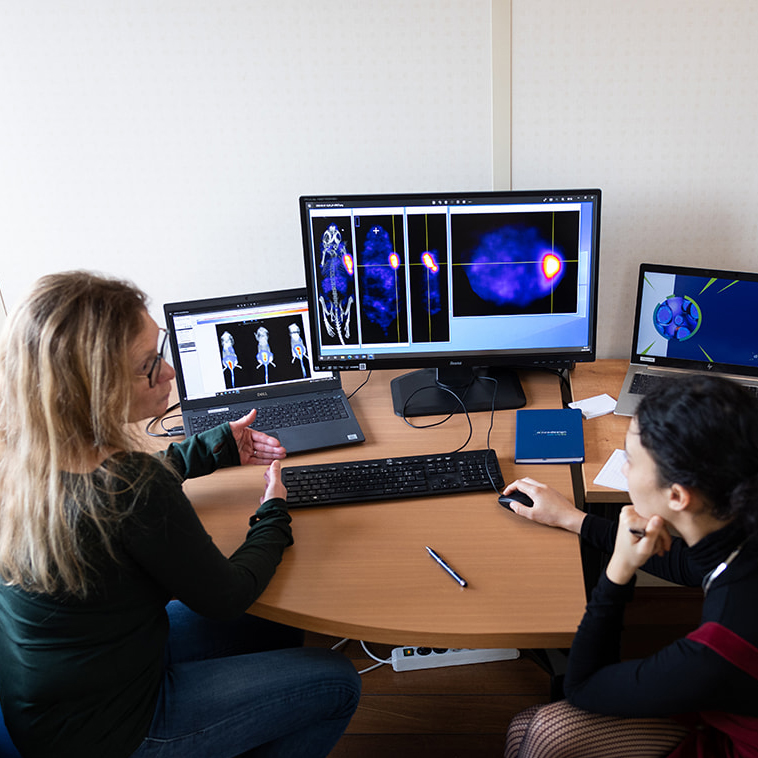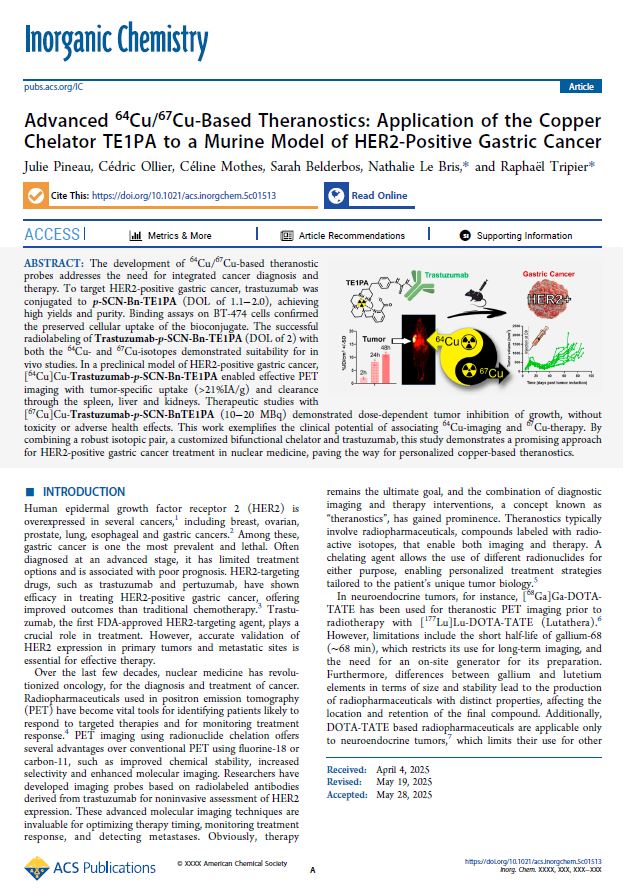


Advanced 64Cu/67Cu-Based Theranostics: Application of the Copper Chelator TE1PA to a Murine Model of HER2-Positive Gastric Cancer
A new paper demonstrates the value of copper theranostics with TE1PA for targeted imaging and treatment of HER2 positive tumors.
Targeted theranostic strategies are gaining traction in oncology as they allow the use of a single molecular construct for both diagnosis and treatment. HER2-positive gastric cancer remains a challenging indication with limited treatment options and poor prognosis. Leveraging copper isotopes — 64Cu for PET imaging and 67Cu for radiotherapy — offers a promising avenue for precise, personalized management of this aggressive disease.
A new peer-reviewed study, published in Inorganic Chemistry, reports the results of a project from the University of Brest with the support of the preclinical research teams at Oncodesign Services. This work builds on the development of the TE1PA chelator, adapted for stable copper complexation, and evaluates its potential in a preclinical gastric cancer model.
In this study, trastuzumab was conjugated with p-SCN-Bn-TE1PA and successfully radiolabeled with Cu-64 and Cu-67. The 64Cu-labeled conjugate enabled high-contrast PET imaging, while the 67Cu-version demonstrated dose-dependent tumor growth inhibition in vivo.
Oncodesign Services supported key aspects of the project including bioconjugation, radiolabeling development, and in vivo studies in HER2-positive tumor-bearing mice.
The results confirm the feasibility of using a single copper-based bioconjugate for both diagnosis and therapy, a significant step toward developing matched theranostic agents for solid tumors. The TE1PA chelator proved to be a stable and efficient alternative to existing chelation systems, such as DOTA or NOTA, with promising translational potential.


